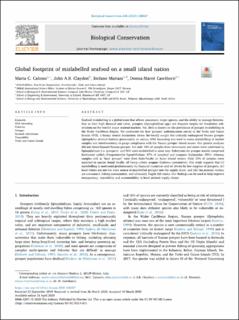| dc.description.abstract | Seafood mislabelling is a global issue that affects consumers, target species, and the ability to manage fisheries. Due to their high demand and value, groupers (Epinephelinae spp.) are frequent targets for fraudulent substitution on the world's major seafood markets. Yet, little is known on the prevalence of grouper mislabelling in the Wider Caribbean Region. We conducted the first ‘grouper’ authentication survey in the Turks and Caicos Islands (TCI), a luxury tourist destination where the locally caught but critically endangered Nassau grouper (Epinephelus striatus) features prominently on menus. DNA barcoding was used to assess mislabelling of market samples and simultaneously to gauge compliance with the Nassau grouper closed season. Our genetic analyses did not detect banned Nassau grouper, but only 18% of samples from restaurants and stores were confirmed as Epinephelinae (i.e. groupers), and 96% were mislabelled in some way. Substitutes for grouper mostly comprised freshwater catfish (Pangasianodon hypophthalmus; 57% of samples) and snappers (Lutjanidae; 25%), whereas samples sold as ‘local grouper’ were from Indo-Pacific or Asian inland waters. Only 22% of samples were matched to species found locally, all being cubera snapper (Lutjanus cyanopterus). Our study suggests that (i) mislabelling is motivated predominantly by financial incentives and/or driven by low supplies of groupers, (ii) local fishers are not the main source of mislabelled grouper into the supply chain, and (iii) the primary victims are consumers, fishing communities, and ultimately fragile fish stocks. Our findings can be used to help improve transparency, traceability and accountability in local seafood supply chains. | en_US |
